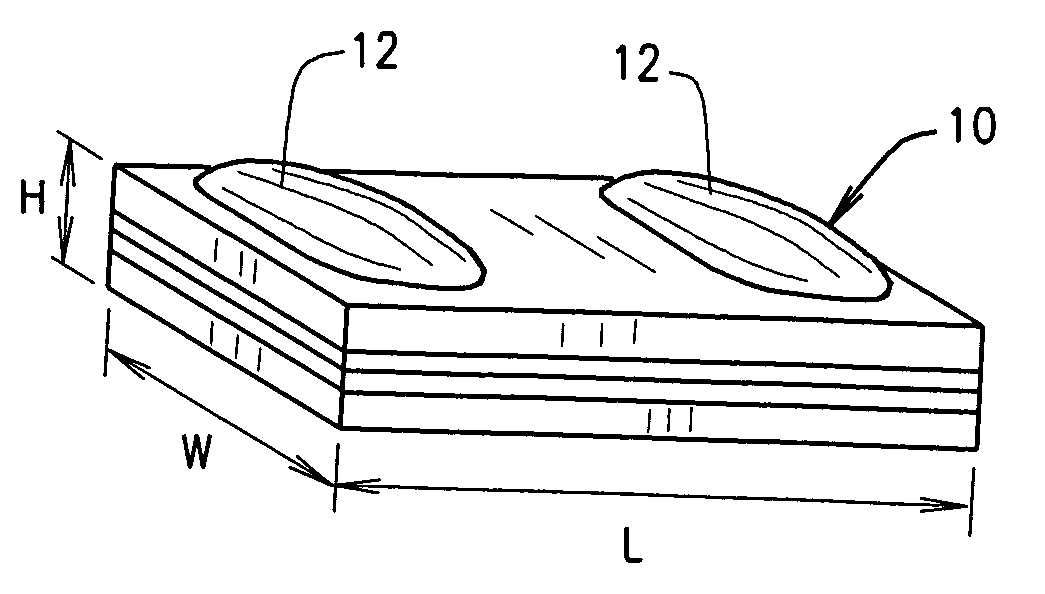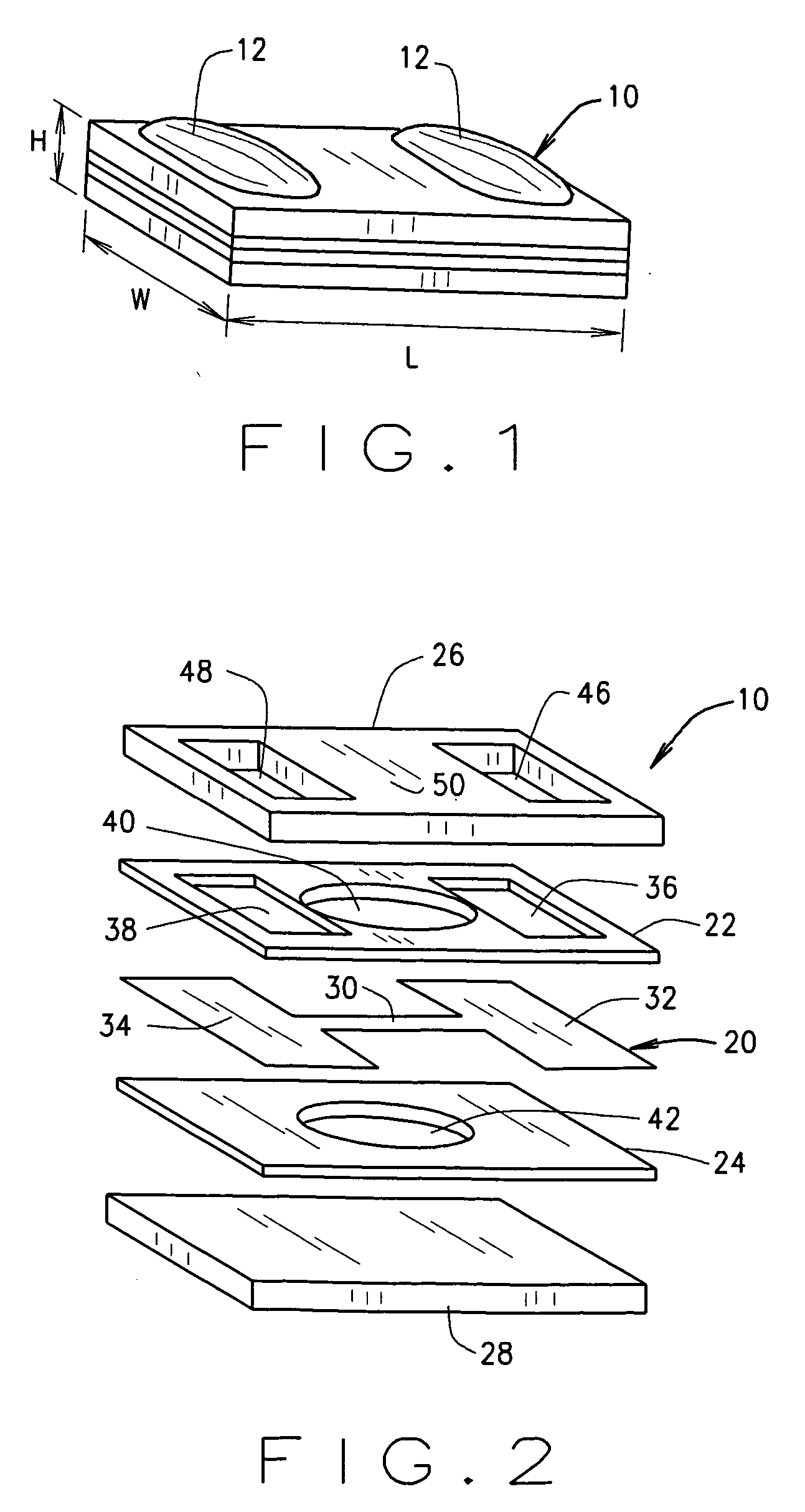Low resistance polymer matrix fuse apparatus and method
a polymer matrix fuse and polymer matrix technology, applied in the field of low resistance polymer matrix fuse apparatus and method, can solve the problems of increasing the electrical resistance of the fuse, affecting low voltage electronic circuits, increasing manufacturing and assembly costs of the fused product, etc., and achieve the effect of low resistance fuse and low resistance fus
- Summary
- Abstract
- Description
- Claims
- Application Information
AI Technical Summary
Benefits of technology
Problems solved by technology
Method used
Image
Examples
second embodiment
[0069]FIG. 4 is an exploded perspective view of a foil fuse 90 substantially similar to fuse 10 (described above in relation to FIGS. 1-3) except for the construction of lower intermediate insulating layer 24. Notably, fusible link opening 42 (shown in FIG. 2) in lower intermediate insulating layer 24 is not present in fuse 90, and fusible link 30 extends directly across the surface of lower intermediate insulation layer 24. This particular construction is satisfactory for fuse operation at intermediate temperatures in that fusible link opening 40 will inhibit or at least reduce heat transfer from fusible link 30 to intermediate insulating layers 22, 24. Resistance of fuse 90 is accordingly reduced during fuse operation, and fusible link opening 40 in upper intermediate insulating layer 40 inhibits arc tracking and facilitates full clearing of the circuit through the fuse.
[0070] Fuse 90 is constructed in substantial accordance with method 60 (described above in relation to FIG. 3) e...
third embodiment
[0071]FIG. 5 is an exploded perspective view of a foil fuse 100 substantially similar to fuse 90 (described above in relation to FIG. 4) except for the construction of upper intermediate insulating layer 22. Notably, fusible link opening 40 (shown in FIG. 2) in upper intermediate insulating layer 22 is not present in fuse 100, and fusible link 30 extends directly across the surface of both upper and lower intermediate insulation layers 22, 24.
[0072] Fuse 100 is constructed in substantial accordance with method 60 (described above in relation to FIG. 3) except, of course, that fusible link openings 40 and 42 (shown in FIG. 2) in intermediate insulating layers 22, 24 are not formed.
[0073] It is appreciated that thin ceramic substrates may be employed in any of the foregoing embodiments in lieu of polymer films, but may be especially advisable with fuse 100 to ensure proper operation of the fuse. For example, low temperature cofireable ceramic materials and the like may be employed in...
fourth embodiment
[0075]FIG. 11 is an exploded perspective view of a fuse 120. Like the fuses described above, fuse 120 provides a low resistance fuse of a layered construction that is illustrated in FIG. 11. Specifically, in an exemplary embodiment, fuse 120 is constructed essentially from five layers including foil fuse element layer 20 sandwiched between upper and lower intermediate insulating layers 22, 24 which, in turn, are sandwiched between upper and lower outer insulation layers 122, 124.
[0076] In accord with the foregoing embodiments fuse element 20 is an electro deposited, 3-20 micron thick copper foil applied to lower intermediate layer 24 according to known techniques. Thin fuse element layer 20 is formed in the shape of a capital I with a narrowed fusible link 30 extending between rectangular contact pads 32, 34, and is dimensioned to open when current flowing through fusible link 30 is less than about 20 ampere. It is contemplated, however, that various dimensions of the fusible link m...
PUM
| Property | Measurement | Unit |
|---|---|---|
| Electrical resistance | aaaaa | aaaaa |
| Fusibility | aaaaa | aaaaa |
| aaaaa | aaaaa |
Abstract
Description
Claims
Application Information
 Login to View More
Login to View More - R&D
- Intellectual Property
- Life Sciences
- Materials
- Tech Scout
- Unparalleled Data Quality
- Higher Quality Content
- 60% Fewer Hallucinations
Browse by: Latest US Patents, China's latest patents, Technical Efficacy Thesaurus, Application Domain, Technology Topic, Popular Technical Reports.
© 2025 PatSnap. All rights reserved.Legal|Privacy policy|Modern Slavery Act Transparency Statement|Sitemap|About US| Contact US: help@patsnap.com



